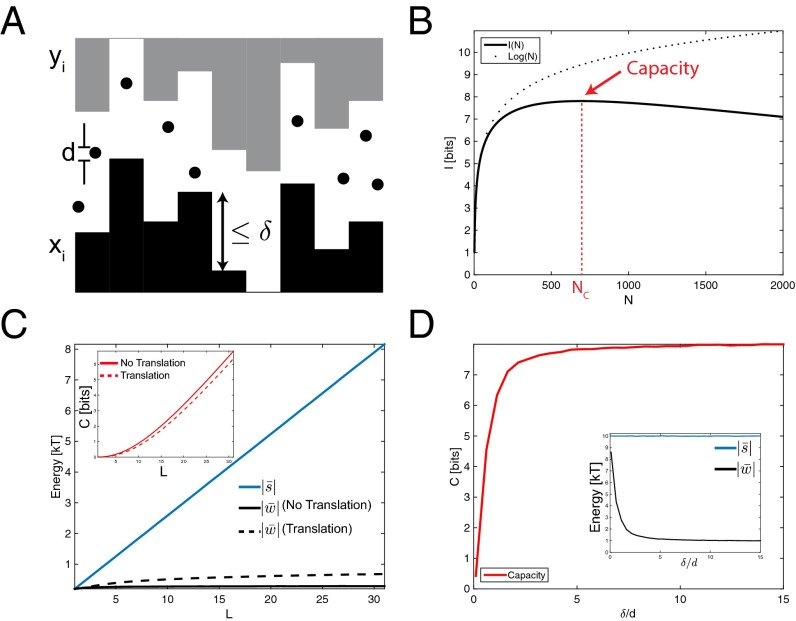Fig. 3.
Complementary shapes demonstrate the capacity of programmable interactions. (A) Each shape is made of L vertical bars of different heights and has a corresponding binding partner shaped exactly as its complement; interactions are mediated via depletant particles of diameter d, and each adjoining bar can change by a maximum amount of δ. (B) Mutual information as a function of N, the number of lock–key pairs, showing a capacity of 7.8 bits (, , , ). (C) Increasing L increases the on-target binding strength (blue), but has little effect on off-target binding strength (black), unlike with colors (Fig. 2C). (C, Inset) Capacity scales linearly with L. Allowing translations has no effect on , but increases (black, dashed line) and therefore decreases C (red, dashed line). (, , ). (D) Fixing , the capacity can be increased by increasing δ: When is small, on-target keys are indistinguishable from off-target keys, and so capacity is small. Increasing δ decreases the crosstalk, and capacity increases accordingly.

